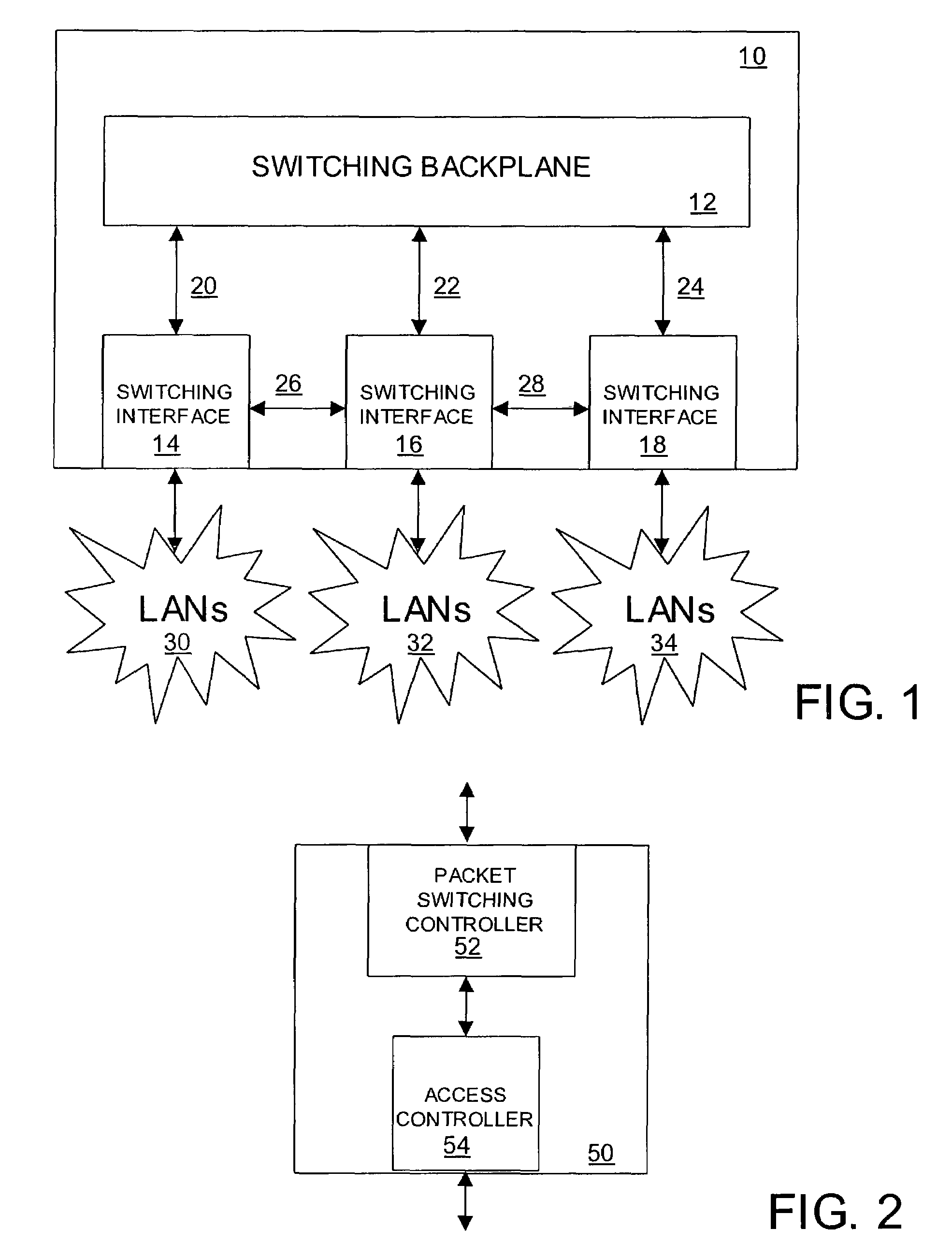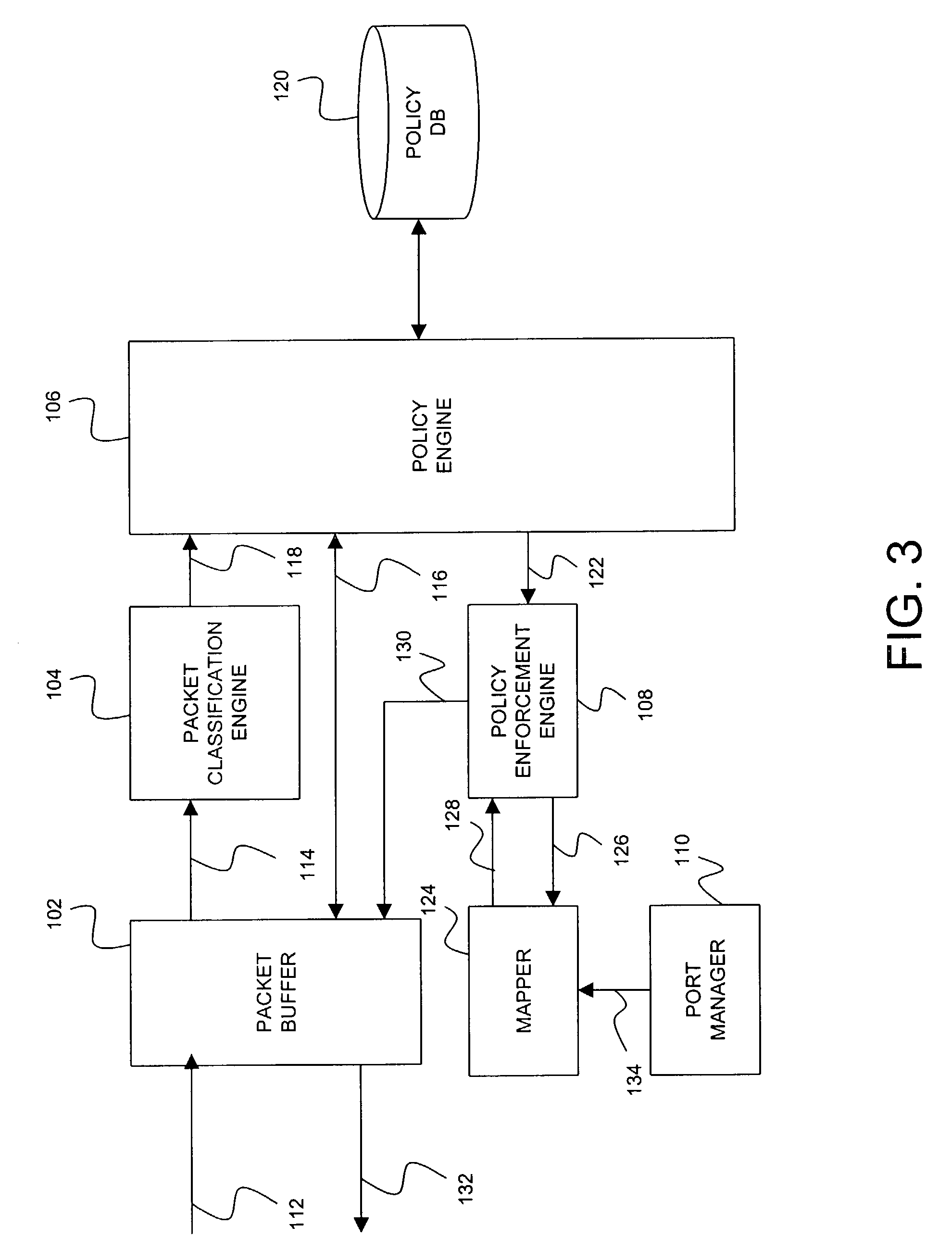Dynamic queue allocation and de-allocation
a dynamic and queue technology, applied in data switching networks, time-division multiplexing selection, multiplex communication, etc., can solve the problems of manual and time-consuming processes, inefficient use of network resources,
- Summary
- Abstract
- Description
- Claims
- Application Information
AI Technical Summary
Benefits of technology
Problems solved by technology
Method used
Image
Examples
Embodiment Construction
[0024]FIG. 1 is a schematic block diagram of a network environment including a packet switching node 10 according to one embodiment of the invention. The packet switching node may also be referred to as a switch, a data communication node or a data communication switch. The packet switching node 10 includes switching interfaces (also referred to as ports) 14, 16 and 18 interconnected to respective groups of LANs 30, 32, 34, and to one another over data paths 20, 22, 24 via switching backplane 12. The switching backplane 12 preferably includes a switching fabric. The switching interfaces may also be coupled to one another over control paths 26 and 28.
[0025]The switching interfaces 14, 16, 18 forward packets to and from their respective groups of LANs 30, 32, 34 in accordance with one or more operative communication protocols, such as, for example, media access control (MAC) bridging and Internet Protocol (IP) routing. The switching node 10 is shown for illustrative purposes only. In ...
PUM
 Login to View More
Login to View More Abstract
Description
Claims
Application Information
 Login to View More
Login to View More - R&D
- Intellectual Property
- Life Sciences
- Materials
- Tech Scout
- Unparalleled Data Quality
- Higher Quality Content
- 60% Fewer Hallucinations
Browse by: Latest US Patents, China's latest patents, Technical Efficacy Thesaurus, Application Domain, Technology Topic, Popular Technical Reports.
© 2025 PatSnap. All rights reserved.Legal|Privacy policy|Modern Slavery Act Transparency Statement|Sitemap|About US| Contact US: help@patsnap.com



